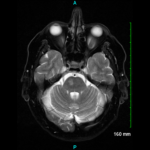Myth: Cyclophosphamide is more powerful than rituximab for treating GPA.
Pearl: “Methotrexate is a crummy treatment for vasculitis. The same goes for azathioprine and MMF [mycophenolate mofetil],” Dr. Stone said. “We have much better drugs now—and safer drugs. These old [treatments] that don’t work very well should be put out to pasture.”
Pearl: In IgG4-related disease, hypocomplementemia implies renal involvement. “We don’t fully understand why that is the case,” Dr. Stone said, “but it really correlates well with renal disease.”
Myth: Weight loss occurs in patients with IgG4-related disease because of overwhelming systemic inflammation. “That’s not why the weight drops off these patients,” Dr. Stone said. “It drops off these patients because they have pancreatic disease—exocrine pancreatic failure.”
More Pearls
During the session, Sterling West, MD, professor of medicine at the University of Colorado School of Medicine, offered additional advice.
His first rule for every case is to look for symptom causes other than a connective tissue disease. “First, ask yourself, could these symptoms be due to an adverse drug effect? Could it be due to an infection, cancer or a clot? There are some other things, but these four are particularly important, because all of them are treated differently than increased immunosuppression,” he said.
Consider sleep apnea and abuse in fibromyalgia. “You’re going to see people who have particularly severe fibromyalgia. And one of the things that has impressed us is the number of people who have sleep apnea as the cause,” Dr. West said. “We ask them, do they snore? … The other element we see is a history of sexual or physical abuse, particularly in childhood or teenage years.”
With gout, consider energy drinks. “Rule out energy drinks [as a cause], particularly for younger individuals that come in with gout,” he said. “Energy drinks have a lot of fructose in them. Fructose is broken down into ATP [adenosine triphosphate]—that’s what gives you your energy—and ATP is broken down into uric acid.”
Dr. West noted seronegative rheumatoid arthritis (RA) candidates may have calcium pyrophosphate dihydrate crystal deposition disease (CPPD) or pseudogout. “They may never have had an attack that sounds like pseudogout,” he said.
He advised, “Don’t make the diagnosis of ANA [antiphospholipid antibody] negative lupus. It’s very, very rare.”
The index finger could hold a clue to myositis in interstitial lung disease patients. A myositis panel may be indicated in these patients. Dr. West said, “Look at the radial side of their index finger—that’s where you’ll see mechanic’s hands. It may be all over their hands. But if it’s subtle, it’ll always be on the radial side of their index finger.”



